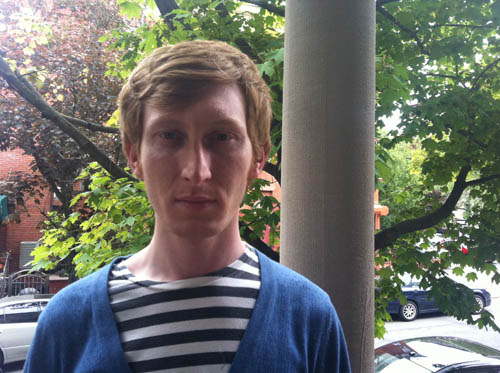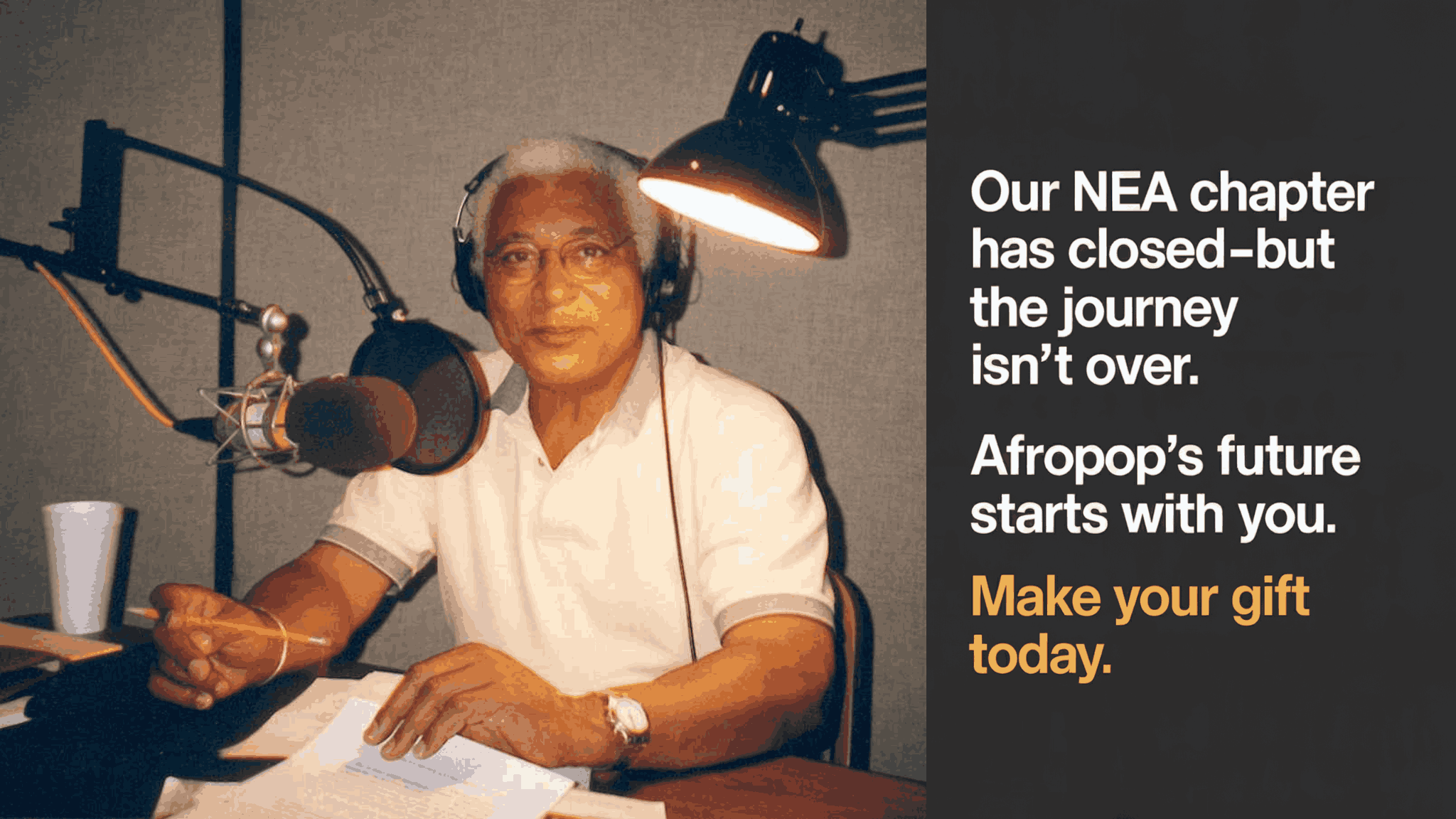Gavin Steingo is an ethnomusicologist and post-doctoral fellow at Columbia University. His work focuses on South African electronic music and he is currently working on what will be the first-ever history of South African house. We interviewed Gavin in Brooklyn last month for the Afropop program, Midwest Electric.
AP: Tell us about house music in South Africa.
South Africa is the only place in the world where house music is popular music, mainstream music. When you turn on the radio, that’s what you’re going to hear. It puzzles a lot of foreigners, who turn on the radio and expect to hear a two-minute pop song. Instead they’ll hear a house track, maybe four measures repeated for 11 minutes straight. House is not only dance music in South Africa. It’s also music to listen to. People listen to it in their house, in their car, wherever they’re hanging out.

AP: Why is it so popular?
People say that house music is popular in South Africa because of the rhythmic emphasis. But when they say that, I think those people are actually tapping into the global imagination of what African music is. They’re mediating South African music through an American and European notion of what African music is. I don’t think that's the right way to approach it. There’s something interesting about that, but I don’t know if it’s necessarily accurate. My sense is the music’s popularity has do more with the history of house music and South Africa.
When house first took off, in late 80s, it was actually known as international music. That’s what people called house music, international music. It was very difficult to get a hold of it in South Africa. It was during apartheid, so black people and white people were living completely separately from one another. There was also a cultural boycott and a lot of music wasn’t actually getting into South Africa, specifically house music.
So there was something forbidden about it and at the same time, there was a sense that house music wasn’t racial -- this notion of international music, that somehow in America or outside of South Africa, there was a music that was crossing racial boundaries. That really appealed to black South Africans. It’s not really seen as ghetto music. It’s seen as cosmopolitan.
During apartheid, there was the notion of separate development, which meant that Zulus must listen to Zulu music, Swazis must listen to Swazi music, Sothos must listen to Sotho music. If you think about these people who are so isolated and so separated, to have this music that so powerfully seemed to signify internationalism, modernity, urbanity, non-racialism -- you can see how powerful that would have seemed.
Apartheid means to keep apart, apartness. So to break down all of those boundaries, I think that’s what in some way it still means in the minds of South Africans. I think that’s why it’s got such a hold on the South African imagination.
AP: Tell us more about the history of house music in South Africa. How did it first arrive?
It came from some very enterprising individuals. It wasn’t something that one could just listen to on the radio too easily or go and pick up at the local store. It started out in Pretoria, which is the capital city of South Africa, but also a very conservative place. Historically, it’s the cradle of apartheid. So strangely enough it was in Pretoria and not in Soweto or Johannesburg that house music first took off.
It started with a guy called DJ Christos, a white guy of Greek descent who was the first house DJ in South Africa. He actually went overseas to buy his mixing decks. He couldn’t buy them South Africa. He bought some mixing decks and some LPs and he brought them back to South Africa. He and a few friends started to DJ this music at nightclubs. From there, he took on a few disciples.
One of the first was Vinny da Vinci. Another was a guy called Ganyani Shabalala who lived in Soweto and still lives in Soweto. Shabalala used to borrow and buy vinyl from Christos. Shabalala’s idea was to make copies of these LPs.

For people like Christos and Vinny, the fact that they were the only ones who had these things made them very powerful. Their collection was what allowed to them to say, “We are the only ones with this music. If you hire us for a gig, we’ll play you stuff you’ve never heart before.”
Ganyani had a totally different idea. He borrowed a turntable from his uncle, and a small cassette player. And he would stay up the whole night recording from these vinyls onto cassettes. And then, in the morning, he would take it to the taxi rink and he would give it to the taxi drivers.
From there, house music spread. In, Limpopo Provence, house music even came to be known as Ganyani’s music, which is really I think quite interesting because people didn’t know who Ganyani was. He wasn’t someone who was gigging at that point, or going and playing concerts. He was almost like a mythical figure. People just had some sense that there was this guy in Soweto who giving them all this music that they never heard before that they really loved. And so they started to call it Ganyani’s music. And it was only five-ten years later that he was able to, you know, get himself a sound system and start traveling and actually playing this music live.

AP: How does Kwaito fit in to the story of house music in SA?
International music was sometimes called Ganyani’s music, but another synonym for international music was Kwaito, which is something most people don’t’ know. The story of the style that most people know as Kwaito is that in 1994, with the new democratic dispensation, young black people started creating their own music by essentially rapping, singing, or doing vocalizing over some sort of hip-hop, dancehall and house tracks. And Kwaito, at least what most people know it as today, becomes the first locally produced South African music in the post-Apartheid period. But, in the 80s, just American house music like a vinyl by Larry Heard, would be called Kwaito. People would listen to a Frankie Knuckles LP and say, “Oh, that’s some great kwaito.”
The basic narrative is that “house music” was popular, but still a bit sub-cultural in the late 80s. It was popular but it didn’t have a national kind of following like it has now. Out of house music came Kwaito in the early 90s. And then Kwaito outlived its popularity and since about 2006, house music again is the most popular music. But it is more complicated than that for a couple of reasons. First, it’s the same people doing kwaito and doing house. Some people even call kwaito, house; some people call house, kwaito. In a way, they’re quite similar. There are stylistic differences to some extent. But it really comes down to just marketing and labeling genres. Kwaito gives it a more local sense than to call it house, gives it more of an international sense. But often it’s actually the same music.
The basic narrative of house and kwaito could also just be told as one music that’s just been popular for a long time, and that’s at different stages been called different things.









